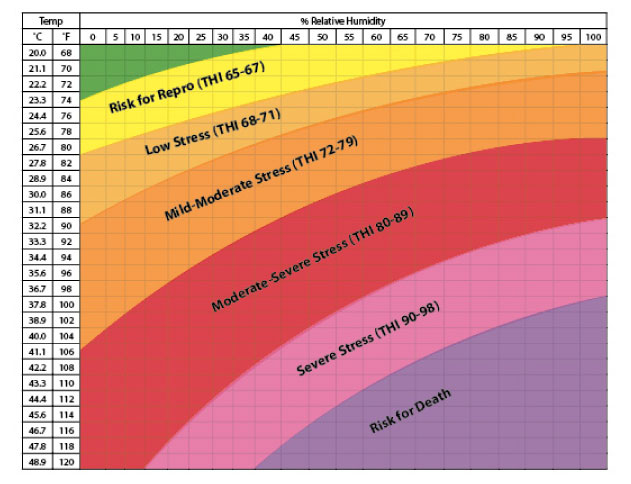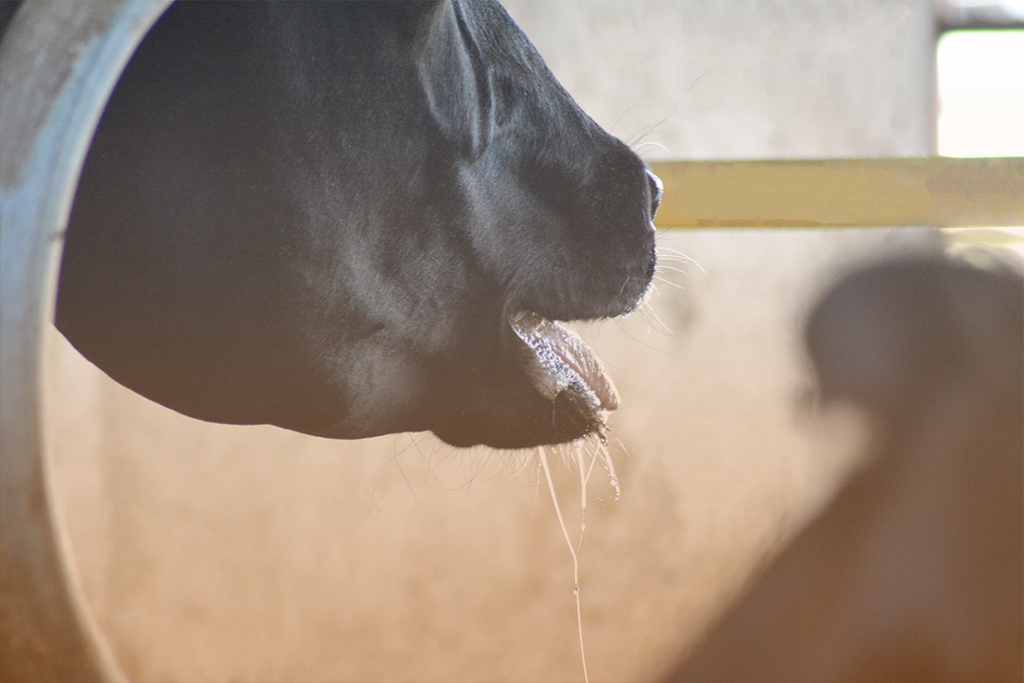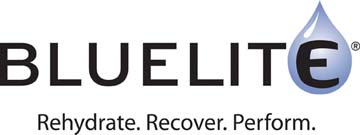Keep your cows cool and comfortable when the temperature rises.
In dairy cows, heat stress is one of the leading causes of reduced production and reproduction. Heat stress occurs when heat from metabolism and the environment are greater than the cow’s ability to dissipate heat. Cattle rely on panting to cool themselves due to the inability to sweat well. In addition to the climate, cattle also need to dissipate heat that is generated in the fermentation process within the rumen.
Studies show that milk production in dairy cows begins to be negatively affected at a THI of 68. It has recently been suggested that reproduction can start to be affected at a THI of 65.
There are many different tools to measure heat stress such as THI, Apps, data loggers that can be placed in areas of investigation, and breaths per minute.
THI is the Temperature Humidity Index, which measures the air temperature and relative humidity. Both of these are important to measure heat stress so you can use the appropriate tools to keep them cool.
Some indicators of heat stress are panting, increased respiration, sweating, standing, and changes in manure consistency.

What are the effects of heat stress?
It’s been discovered that heat stress hits at lower temperatures – which means heat abatement strategies should be implemented sooner in order to prevent the effects of heat stress. When heat stress occurs, there are many different effects that occur visually, as well as physiologically.

- Decreased Dry Matter Intake
- Rumen acidosis
- Laminitis
- Decreased Milk Components
- Leaky Gut
- Inflammation
- Rumen acidosis
- Lower Milk Production
- Decreased Reproductive Performance
- Lower Estrus Detection
- Increased Pregnancy Loss/Early Embryonic Death
- Early Herd Removals
- Increased culling
- Death loss
Cows are affected by heat stress in different ways. There are many contributing factors but one thing remains the same; preventing or minimizing heat stress is critical during the hot months.
In non-cooled farms, heat stress can cause 40-50% decline in milk yield while in cooled barns it can be up to 10-15%
How to minimize heat stress in your herd
Heat abatement strategies are important to have in place before the heat hits in order to keep your cows cool. Some of these management practices include; provide shelter, proper nutritional management, shade, fans, and fresh, clean water. Heat stress abatement is key. Modern cows experience heat stress earlier so it’s important to concentrate on maintaining healthy rumen pH.
Environment
- Reduce walking distance
- Reduce time in holding pen – cows get hottest in the holding pen
- Ventilate and cool
- Exit lane cooling
- Don’t “lock up” mid day
- Feed early in the morning and late at night
- At least provide shade for dry cows

Nutrition
Once you’ve invested in heat stress abatement strategies, then talk to your nutritionist and vet about what you can do to prevent heat stress from a nutrition standpoint. Make the adjustment to feed as dry matter intake decreases, utilize high quality forages and increase the energy in the diet.
- Feed early in the morning and late at night
-
- Push up often
- Remove old feed
- Avoid vaccinations during the middle of the day
- Feed more frequently
- Avoid temptation to reduce fiber
Water – water intake can double during the summer months 40/45 gallons
- Clean water tanks daily
- Increase opportunity for hydration

TECHMIX IS HERE, WITH YOUR HEAT STRESS SOLUTION
Help ease the effects of heat stress with Bovine BlueLite®
Encourage water intake during the hottest summer months or whenever your cows are dehydrated. Bovine BlueLite comes in a convenient powder, pellet or liquid and your cows are sure to love it.
Learn more about BlueLite

